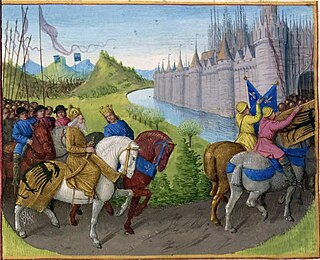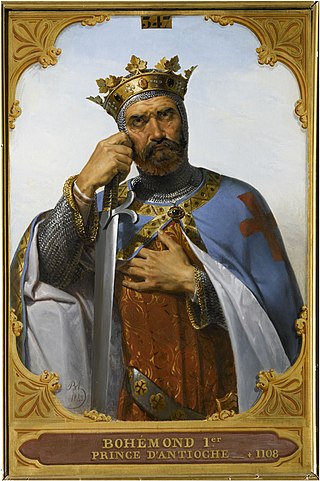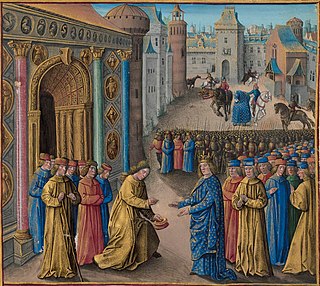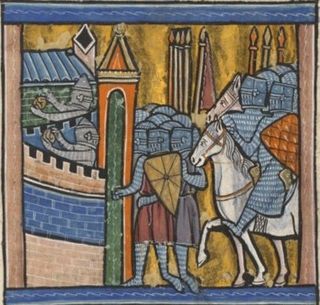The 1090s was a decade of the Julian Calendar which began on January 1, 1090, and ended on December 31, 1099.

Year 1098 (MXCVIII) was a common year starting on Friday of the Julian calendar.
The 1100s was a decade of the Julian Calendar which began on January 1, 1100, and ended on December 31, 1109.
The 1140s was a decade of the Julian Calendar which began on January 1, 1140, and ended on December 31, 1149.

Year 1147 (MCXLVII) was a common year starting on Wednesday of the Julian calendar.
The 1110s was a decade of the Julian Calendar which began on January 1, 1110, and ended on December 31, 1119.
The 1080s was a decade of the Julian Calendar which began on January 1, 1080, and ended on December 31, 1089.

Year 1103 (MCIII) was a common year starting on Thursday of the Julian calendar.

Year 1148 (MCXLVIII) was a leap year starting on Thursday of the Julian calendar.

Year 1096 (MXCVI) was a leap year starting on Tuesday of the Julian calendar.

Year 1094 (MXCIV) was a common year starting on Sunday of the Julian calendar.

Year 1102 (MCII) was a common year starting on Wednesday of the Julian calendar.

Year 1105 (MCV) was a common year starting on Sunday of the Julian calendar.
Year 1108# (MCVIII) was a leap year starting on Wednesday of the Julian calendar.

The First Crusade (1096–1099) was the first of a series of religious wars, or Crusades, initiated, supported and at times directed by the Latin Church in the Middle Ages. The objective was the recovery of the Holy Land from Islamic rule. While Jerusalem had been under Muslim rule for hundreds of years, by the 11th century the Seljuk takeover of the region threatened local Christian populations, pilgrimages from the West, and the Byzantine Empire itself. The earliest initiative for the First Crusade began in 1095 when Byzantine emperor Alexios I Komnenos requested military support from the Council of Piacenza in the empire's conflict with the Seljuk-led Turks. This was followed later in the year by the Council of Clermont, during which Pope Urban II supported the Byzantine request for military assistance and also urged faithful Christians to undertake an armed pilgrimage to Jerusalem.
Bohemond I of Antioch, also known as Bohemond of Taranto or Bohemond of Hauteville, was the prince of Taranto from 1089 to 1111 and the prince of Antioch from 1098 to 1111. He was a leader of the First Crusade, leading a contingent of Normans on the quest eastward. Knowledgeable about the Byzantine Empire through earlier campaigns with his father, he was the most experienced military leader of the crusade.

The Battle of Dorylaeum took place during the First Crusade on 1 July 1097 between the crusader forces and the Seljuk Turks, near the city of Dorylaeum in Anatolia. Though the Turkish forces of Kilij Arslan nearly destroyed the Crusader contingent of Bohemond, other Crusaders arrived just in time to reverse the course of the battle.
The Treaty of Deabolis was an agreement made in 1108 between Bohemond I of Antioch and Byzantine Emperor Alexios I Komnenos, in the wake of the First Crusade. It is named after the Byzantine fortress of Deabolis. Although the treaty was not immediately enforced, it was intended to make the Principality of Antioch a vassal state of the Byzantine Empire.

The siege of Nicaea was the first major battle of the First Crusade, taking place from 14 May to 19 June 1097. The city was under the control of the Seljuk Turks who opted to surrender to the Byzantines in fear of the crusaders breaking into the city. The siege was followed by the Battle of Dorylaeum and the Siege of Antioch, all taking place in modern Turkey.
Manuel Boutoumites or Butumites was a leading Byzantine general and diplomat during the reign of Emperor Alexios I Komnenos, and one of the emperor's most trusted aides. He was instrumental in the Byzantine recovery of Nicaea from the Seljuk Turks, in the reconquest of Cilicia, and acted as the emperor's envoy in several missions to Crusader princes.











